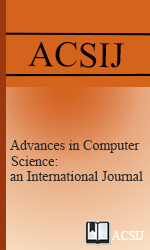Evaluating the Impact of Image Delays on the Rise of MMI-Driven Telemanipulation Applications: Hand-Eye Coordination Interference from Visual Delays during Minute Pointing Operations
Abstract
Robots with high freedom of movement can be used for minute manipulation, enabling a wide range of real-world applications. However, the use of telemanipulation systems driven by man-machine interaction (MMI) is currently limited to experimental trials, partly because the image delay during transmission interferes with the operator’s hand-eye coordination. This study examined how delays affect operation efficiency by pointing target size, and the degree of difficulty when performing telemanipulation operations. We conducted tests in which subjects performed pointing operations while visual delays interfered with their hand-eye coordination. Our findings show statistically that regardless of target size, delay variance of 200 ms or less hardly affects operation efficiency, and that difficulty increases for a target diameter of between 4 and 2 mm.
Keywords
Full Text:
PDFReferences
S. Suzuki, N. Suzuki, A. Hattori, K. Konishi, S. Ieiri, M. Hashizume, “Tele-surgery Simulation for Surgical Planning”, Training and Education, Medical Imaging Technology, Vol. 25, No. 1, 2007, pp. 25-30.
S. Suzuki, N. Suzukia, M. Hashizume, Y. Kakeji, K. Konishib, A. Hattoria, M. Hayashibe, “Tele-training simulation for the surgical robot system “da Vinci, CARS 2004”, Computer Assisted Radiology and Surgery, Proceedings of the 18th International Congress and Exhibition, Vol. 1268, 2004, pp. 86-91.DOI: 10. 1016/j. ics. 2004. 03. 160.
S. Suzuki1, N. Suzuki, A. Hattori1, M. Hayashibe, K. Konishi, Y. Kakeji, M. Hashizume, “Tele-surgery simulation with a patient organ model for robotic surgery training”, The International Journal of Medical Robotics and Computer Assisted Surgery, Vol. 1, No. 4, 2005, pp. 80−88.
S. Suzuki, “Tele-surgery simulation experiment of da Vinci surgery training between Japan and Thailand”, International Journal of Computer Assisted Radiology and Surgery, Vol. 1, No. 1, 2006, pp. 514.
The University of Texas MD Anderson Cancer Center: AT&T's $1 Million Contribution to Seed Telesurgery Program, MD Anderson News Release, 2012, http://www. mdanderson.org/newsroom/news-releases/2012/at-t-s-1-million-contribution-to-seed-telesurgery-program.html.
J. Marescaux, J. Gagner, M., et al., “Transatlantic robot-assisted telesurgery”, Nature, Vol. 413, 2001, pp. 379−380.
G. R. Vandenbos, The APA Dictionary of Psychology, American Psychological Association, 1 edition, July 15, 2006, pp. 586.
M. Mitsuishi, Medical Robotics, J Jpn Coll of Angiol, Vol. 46, 2006, pp. 759-767.
S. Ieiri, M. Hashizume, “Development of Surgical Assisted System for Remote Medicine”, Vol. 49, 2011, pp. 673-677, doi: http: //doi. org/10. 11239/jsmbe. 49. 673.
Hoffmann, R. Errol, “Fitts Law with Transmission Delay”, In Ergonomics, Vol. 35, 1992, pp. 37-48.
W. Fujisaki, Effects of Delayed Visual Feedback on Grooved Pegboard Test Performance, Front Psychol, Vol. 3, No. 61, 2012, pp. 1-14.DOI: 10. 3389/fpsyg. 2012. 00061.
I. S.MacKenzie, “A note on the information-theoretic basis for Fitts' law”, Journal of Motor Behavior, Vol. 21, 1989, pp.323-330.
I. S.MacKenzie, “Fitts' law as a research and design tool in human-computer interaction”, Human-Computer Interaction, Vol. 7, 1992, pp.91-139.
 Advances in Computer Science : an International Journal
Advances in Computer Science : an International Journal







